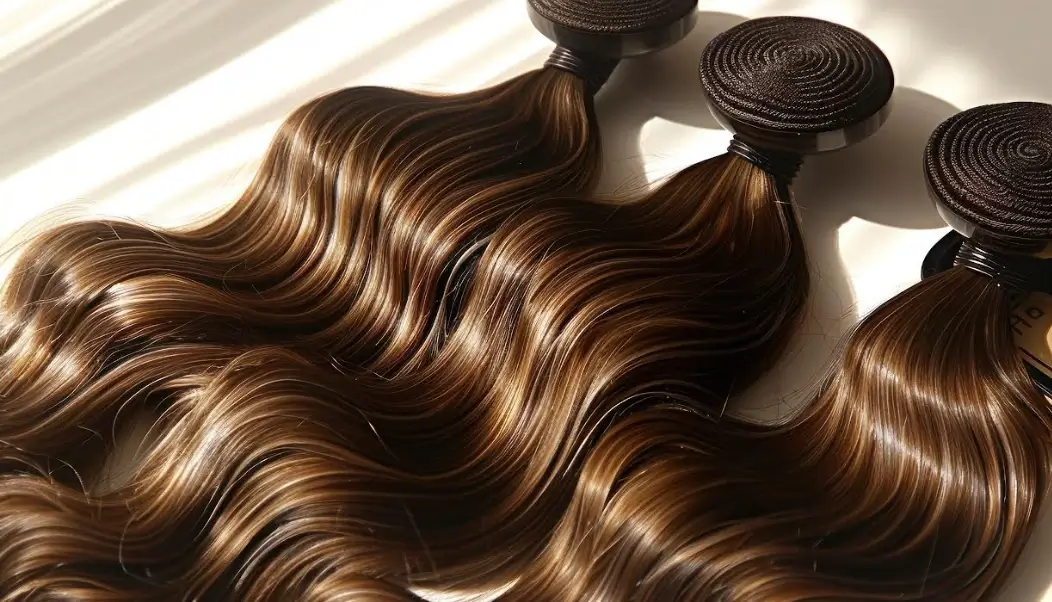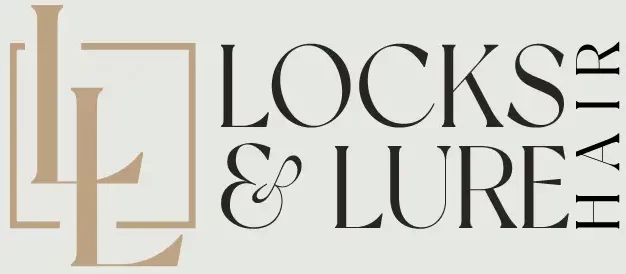
What are Asian Hair Extensions?
Asian hair extensions are strands of real human hair added to your natural hair to increase its length, perhaps volume, or simply to restyle its appearance. Our Asian hair extensions are from donors of Asian descent, most commonly from countries in East Asia and Southeast Asia hence the term refers primarily to the origin of the donor (and their hair). Natural, unprocessed Asian hair extensions generally have distinct characteristics: straightness, dark color, thick strands are typical of hair from Asia, though the final texture and color of the extensions will depend on how the hair has been processed.
Asian Hair Extension Texture
Asian hair extensions are predominantly straight in texture and dark in color. Hair texture refers to the hair’s wave pattern (straight, wavy, curly, coily) and is important because texture is key to achieving a natural and seamless blend with your own hair. If the texture of your hair extensions doesn’t match or complement your natural hair, your hair extensions won’t blend in and will be noticeably unnatural. In addition to natural blending, texture influences your hair’s natural flow and movement once styled. Thus using extensions with a texture that matches your natural hair makes styling and maintenance easier as you will have a single unified natural behavior to manage.
Individual Asian hair extension strands tend to be thicker and stronger compared to Caucasian hair types. Strand thickness is important in achieving a seamless blending, natural look and feel. If the hair extension strands are too thick or too thin compared to your natural hair, blending and styling a natural look becomes difficult. In addition to blending, strand thickness influences the hair’s overall perceived volume and density for a given weight of extensions, as bundles made of finer strands often appear denser than those of the same weight made from thicker strands.
Asian Hair Extensions & Rain
How Asian hair extensions hold up in the rain depends primarily on their texture, overall quality, and how they have been processed. Straight Asian hair extensions may lose some volume or become slightly limp but do reasonably well in rain and are less prone to frizz than curly hair. On the other hand if you’ve heavily processed your hair extensions, bleached or permed them into a different texture, they may be more likely to frizz up when exposed to rain, just as any chemically treated hair does. At the end of the day hair extensions with intact cuticles will repel water better and resist tangling in rain, whereas damaged cuticles (from processing) will absorb moisture and likely frizz up. Why is the cuticle so important?
Think of the hair cuticle like the shingles on a roof. When the shingles (intact cuticles) lie flat and smooth, they create a protective surface that repels rain and moisture, causing water to bead up and run off rather than soak in. This smooth surface also means the shingles don’t catch or snag on the shingles of other hairs next to them, preventing tangling.
However, when the shingles are lifted, broken, or missing (damaged cuticles), they expose the inner layers of the hair. These rough, open areas absorb moisture from rain or humidity like a sponge, causing the hair to swell unevenly and frizz. The lifted or broken shingles also easily catch and snag on the rough spots or lifted cuticles of other hair strands, causing tangling and matting.
Asian Hair Extensions & Humidity
How Asian hair extensions hold up in humidity depends on their quality, texture and most importantly, the amount of processing they have undergone. Asian hair extensions are usually straight and more resistant to humidity than naturally curly or wavy hair. Straight extensions can become flatter or develop a soft wave in humid conditions, but less prone to frizz and expansion than textured hair. However, if the Asian straight hair extensions are strongly bleached to create lighter colors or permed to be wavy or curly, the hair becomes more porous and the cuticle can be damaged. Damaged cuticles absorb moisture from humidity triggering frizz just as your natural hair reacts should your cuticles become damaged. Hair extensions with intact cuticles or high-quality “Remy” hair resist moisture absorption better, dramatically resist frizz and enable the hair extensions to maintain their style even in humid weather.
Why do People Prefer Asian Hair Extensions?
People seeking straight hair extensions love Asian hair extensions because they tend to have thicker strands and a strong, resilient cuticle, which contributes to their durability and strength. Furthermore, when collected and processed correctly with cuticles intact and aligned (known as Remy hair) are less likely to tangle.
Are Asian Hair Extensions Thick or Thin Compared to Other Types of Extensions Hair?
In comparison to Caucasian (European) hair, individual strands of natural Asian hair are considered thicker. It’s also considered to have thicker strands on average than South American hair (which often includes types referred to as Brazilian, Peruvian, or Colombian). Asian hair generally has the largest individual strand diameter for each hair fiber. This difference in strand thickness is important for extensions as it affects how well the hair blends with different natural hair types and influences the perceived volume and feel of the extensions. This variation in strand thickness is important for hair extensions as it directly impacts how seamlessly the hair blends with different natural hair types and significantly influences both the perceived volume and the tactile feel of the extensions.
Is Asian Hair Considered Good Quality for Making Hair Extensions?
Yes, Asian hair is generally considered to have the potential for very good quality when used for hair extensions, due to its natural strength, durability, and robust cuticle in its unprocessed state. However, the final quality of Asian hair extensions is critically determined by the level of processing they undergo, particularly the harshness of bleaching required to achieve lighter colors from naturally dark hair, and whether the hair is collected and prepared as high-quality Remy hair, ensuring cuticles are intact and aligned to prevent tangling. Therefore, while the raw hair has advantageous properties, the term “Asian hair extensions” doesn’t guarantee quality; it’s essential to look for indicators like “Remy” or “Virgin” (unprocessed) to ensure the hair has maintained its integrity and is truly of high quality.
What is the difference Between Asian Hair Extensions and Indian Hair Extensions?
Asian hair extensions (often referring to hair from East/Southeast Asia like China or Vietnam) and Indian hair extensions generally differ in their characteristics. Hair from East/Southeast Asia tends to have thicker individual strands and is most often naturally straight, with predominantly dark colors. In contrast, Indian hair, while also primarily dark, is more known for its natural variety of textures, including straight, wavy, and curly patterns, and its individual strands are commonly described as slightly finer than East/Southeast Asian hair, though still generally thicker than European hair.
Can Asian Hair Extensions be Dyed, Bleached, or Styled with Heat?
Yes, Asian hair extensions can be dyed, bleached, and styled with heat, but the outcome or success depends on the quality of the extensions and any previous processing. Since natural Asian hair is typically dark, lightening it requires more intensive chemical processing which can damage the hair’s cuticle. For example bleaching dark Asian requires removing pigment, which damages the hair’s protective outer layer, the cuticle, leaving the hair porous and vulnerable. A damaged cuticle results in increased moisture absorption from humidity (causing frizz), loss of natural shine and smoothness, increased dryness and brittleness, tangling, matting and breakage. High-quality, unprocessed (“Virgin”) Asian hair will handle dyeing and bleaching much better than hair that has already been colored or treated. While you can indeed style with heat tools, excessive heat, especially on hair that has already been processed, can damage the hair over time. This is why it’s important to start with high-quality extensions and always use heat protectants for styling.
How Long Do Asian Hair Extensions Last?
Lifespan of Asian hair extensions varies depending the quality of the hair itself (e.g., whether it’s high-quality Remy hair with intact cuticles, or heavily processed/non-Remy hair), how much processing it’s undergone, and how well the extensions are cared for by the wearer (proper washing, conditioning, minimized heat styling, gentle handling). Generally, with quality and healthy care, Asian hair extensions can last anywhere from 3 to 6 months with regular wear, and higher quality (like unprocessed Virgin Remy) or less frequently worn options (like clip-ins used occasionally) might last a year or even longer.
Do Asian Hair Extensions Tangle Easily?
The cause of tangling and matting in hair extensions is the condition and alignment of the hair’s cuticle, the outermost layer. If the cuticles are intact and all run in the same direction (which is Remy hair), the hair strands lay smoothly against each other and resist tangling. However, if the cuticles are stripped, damaged, or the cuticles misaligned for any reason, the overlapping scales snag, causing significant tangling and matting. When the cuticles are damaged, lifted, or, most significantly, when hairs with cuticles facing opposite directions are mixed (misaligned), the overlapping scales snag and catch on one another instead of sliding smoothly past each other.. This constant catching and interlocking of scales leads directly to tangling, knotting, and matting, making the extensions incredibly difficult to manage, prone to breakage, and shortening their usable lifespan.

